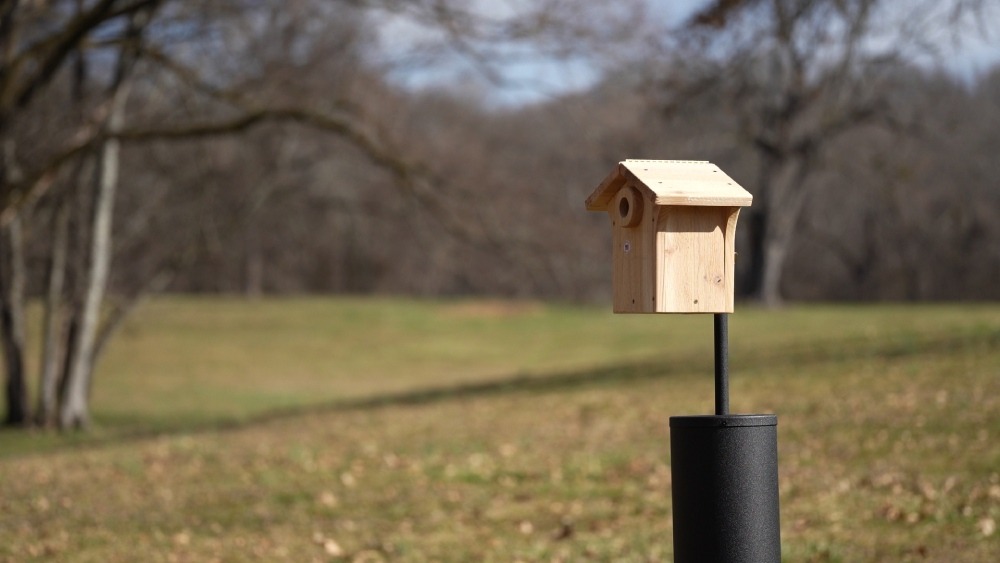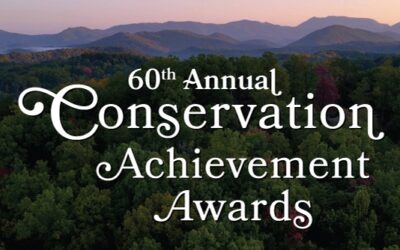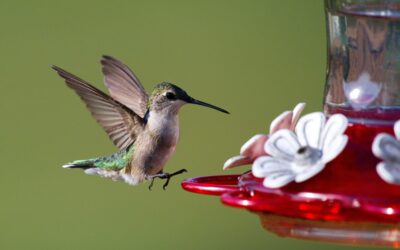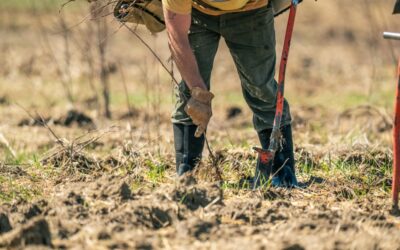Article by Tony Lance, staff naturalist and habitat manager for Tennessee Wildlife Federation.
If your backyard is anything like mine right now, birds are actively pairing off and searching for the perfect nesting spot. If you want to attract cavity nesters such as eastern bluebirds, wrens, Carolina chickadees, tree swallows, and tufted titmice, now is the time to put out a nest box. A little planning goes a long way in making your yard a more appealing space for these species.
Choosing the Right Nest Box
When it comes to picking a nest box, there are countless options available. It might be tempting to choose a brightly-colored birdhouse with multiple entrance holes, but these designs are often more appealing to people than birds. Because each species has specific nesting requirements, it’s important to know what features will attract the birds you want.
One key factor is entrance hole size. the right entrance hole size helps ensure the desired species can get into the box, while also keeping out undesirable species like European starlings. For example:
- Chickadees prefer a 1 1⁄8-inch entrance hole.
- Bluebirds do best with a 1 1⁄4-inch hole.
- Tree swallows prefer a 1 3⁄8-inch opening.
Many manufacturers design nest boxes to meet these size requirements, making it easy to find one suited for your desired species.
Another important feature is an easy-to-open panel for cleaning at the end of the season. This allows you to remove old nesting material, keeping the box fresh for future occupants.
Watch: How to Set Up Nest Boxes
Finding the Right Spot
Placement is key when setting up a nest box, as different birds have different habitat preferences.
- Bluebirds and tree swallows prefer boxes in open areas with scattered trees.
- House wrens, Carolina wrens, and chickadees favor locations with more vegetation.
The direction the box faces also matters. Positioning the entrance eastward helps shield eggs and nestlings from prevailing winds and rain.
Keeping Nest Boxes Safe
To help protect nesting birds, consider mounting the box on a pole with a predator guard, or baffle. These simple devices prevent raccoons, snakes, and squirrels from climbing up and reaching eggs and chicks. Placing boxes away from overhanging branches or buildings further reduces the risk of predators getting inside.
Managing House Sparrows
House sparrows often compete with native birds for nesting space. One way to reduce conflicts is by placing extra nest boxes in areas they prefer, such as near buildings. If a house sparrow begins building a nest in one of these boxes, removing the nest before it’s completed can encourage them to move on—at least for the season.
Providing a safe and inviting nesting space is a rewarding way to support native birds while enjoying more wildlife activity in your yard. With the right setup, you may soon see feathered families raising their young right outside your window!
